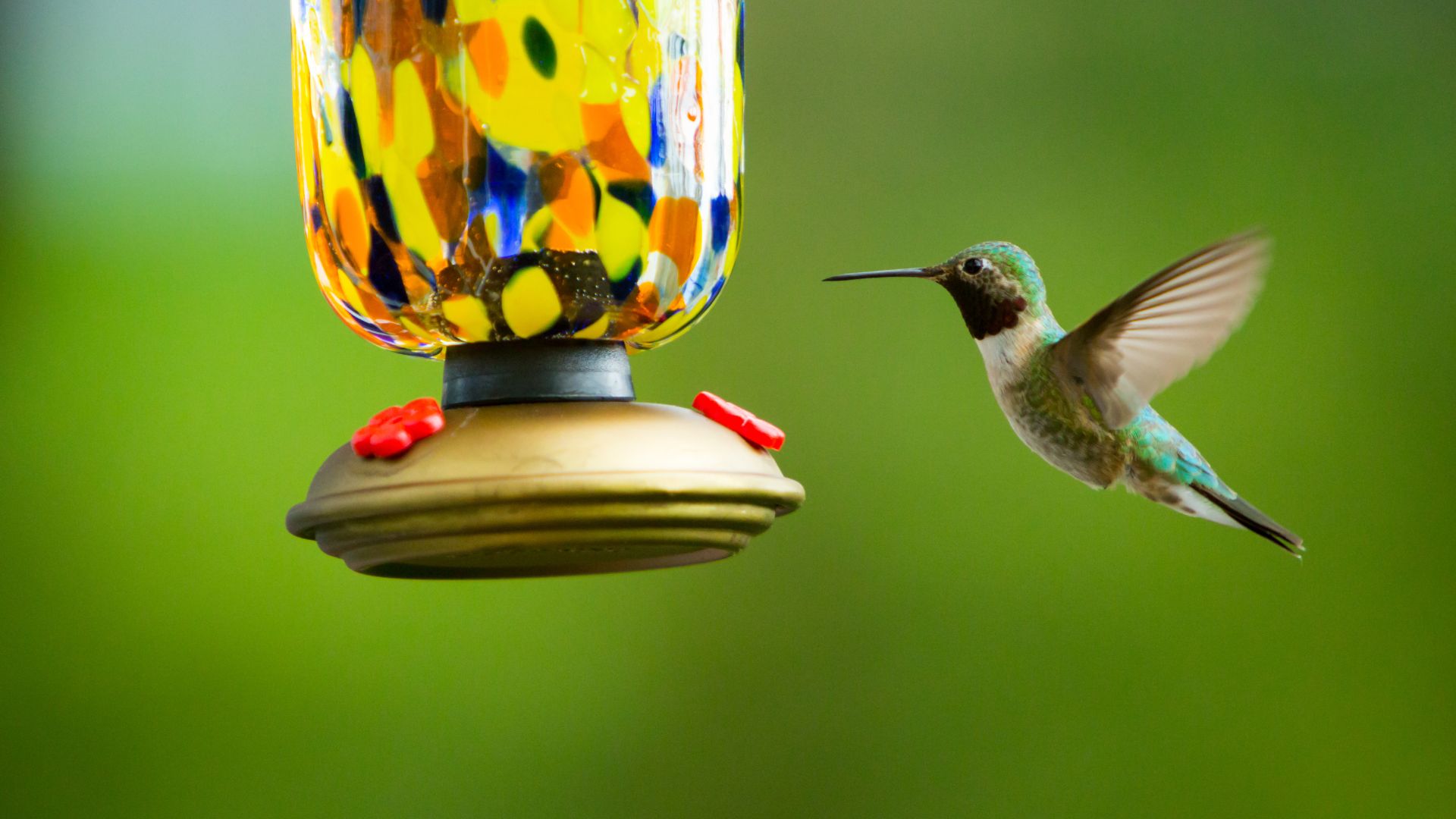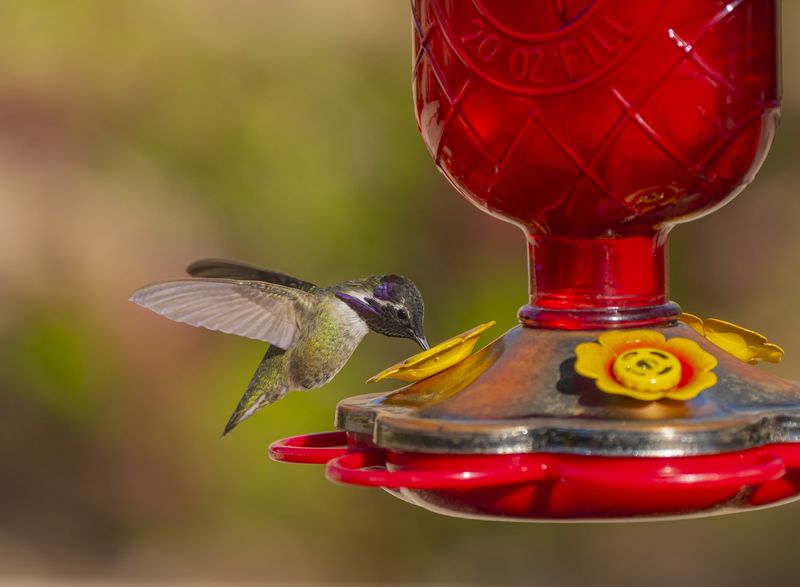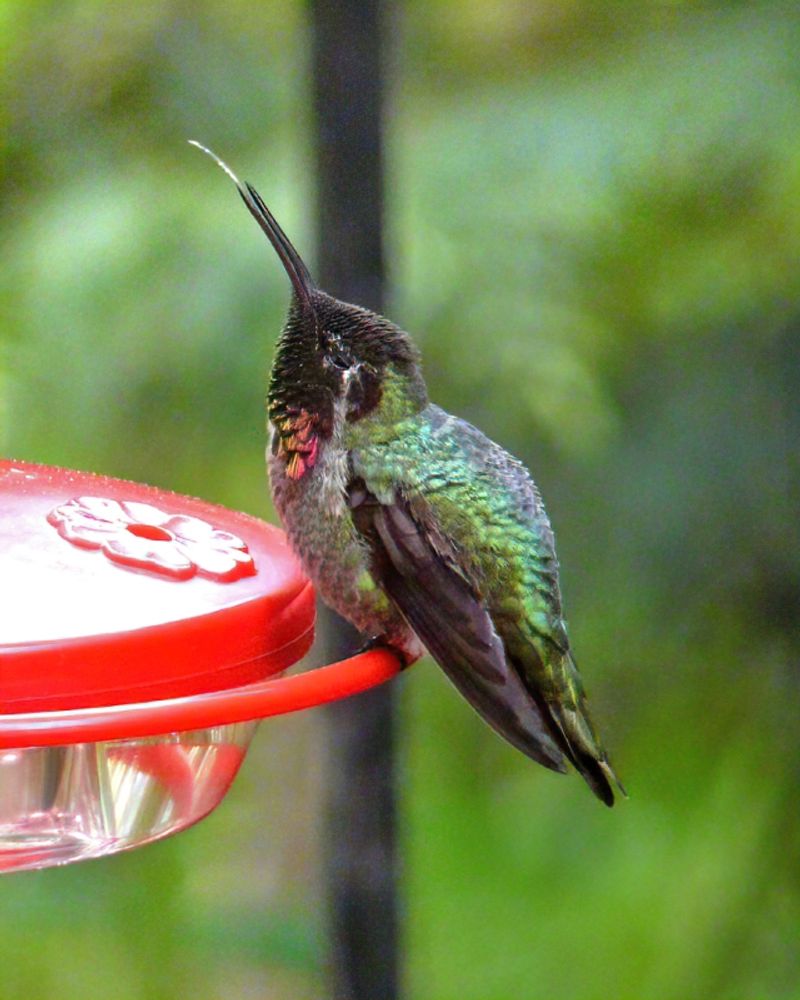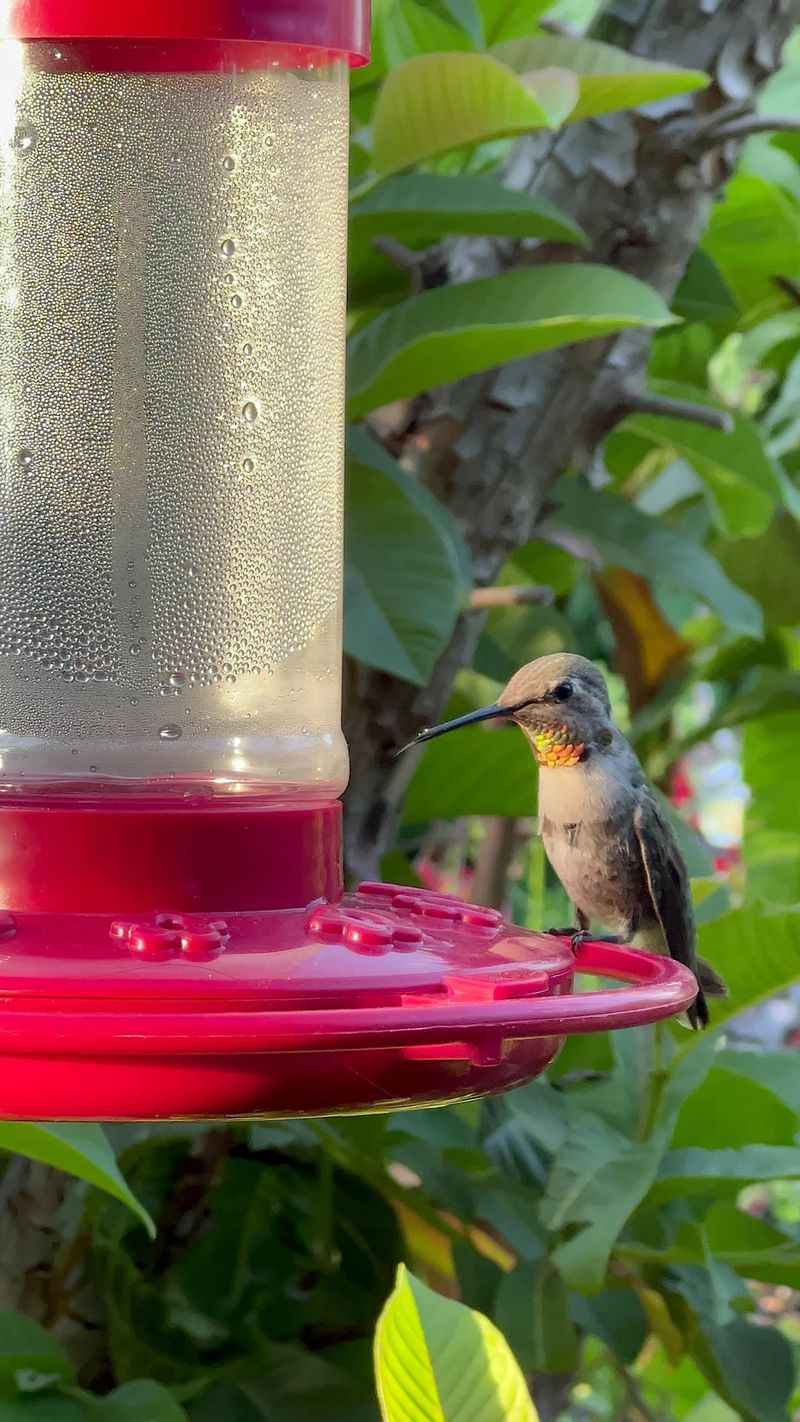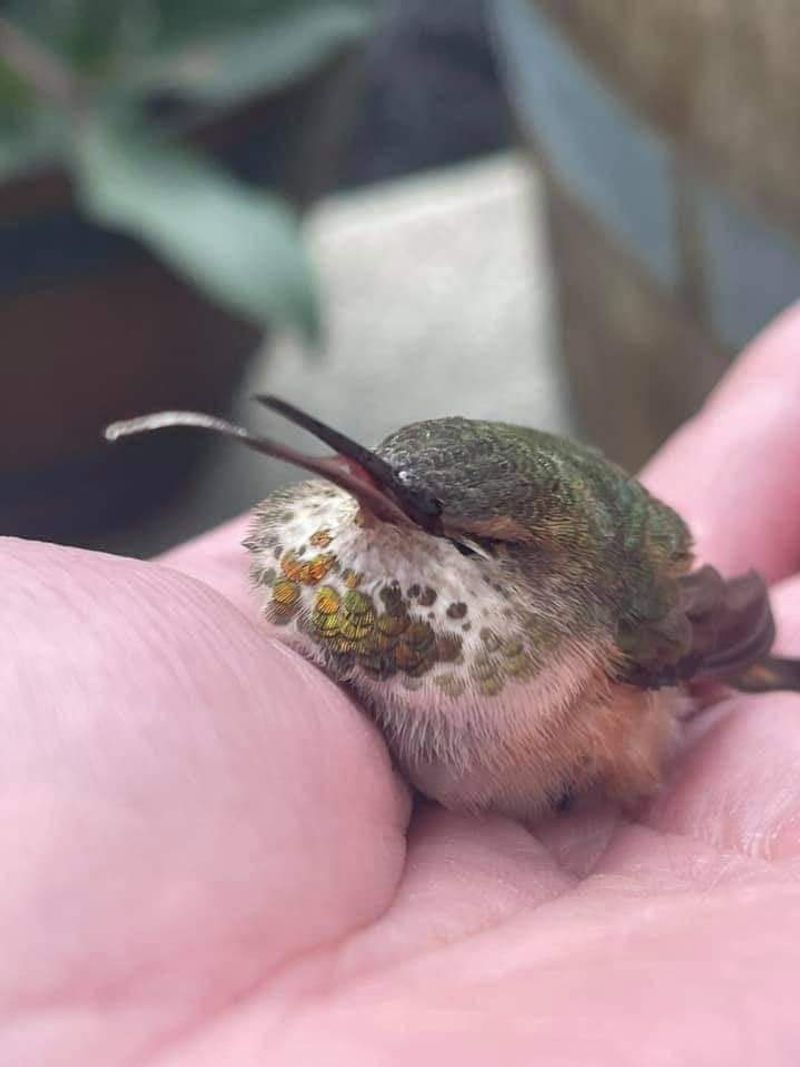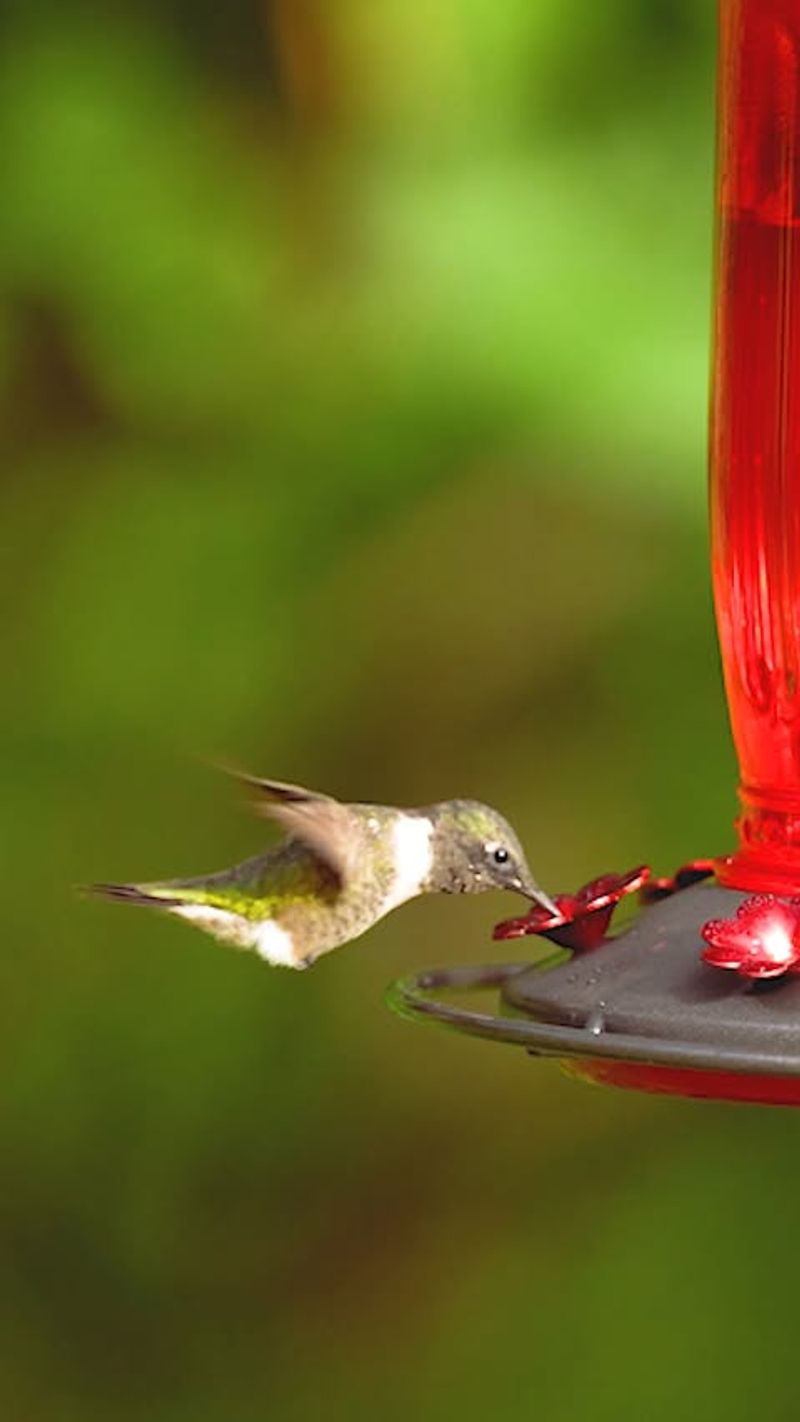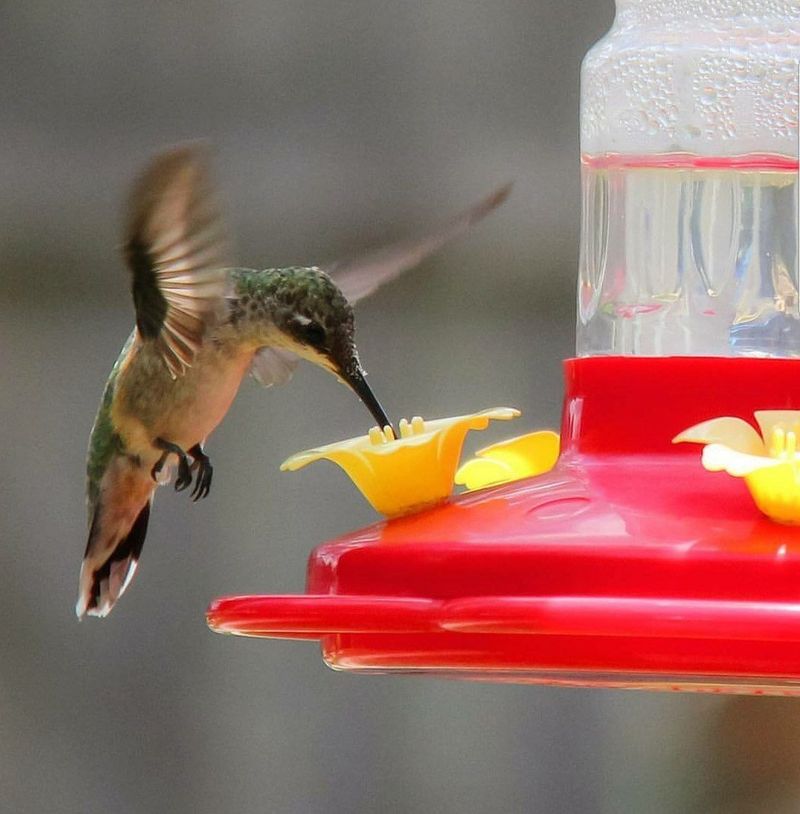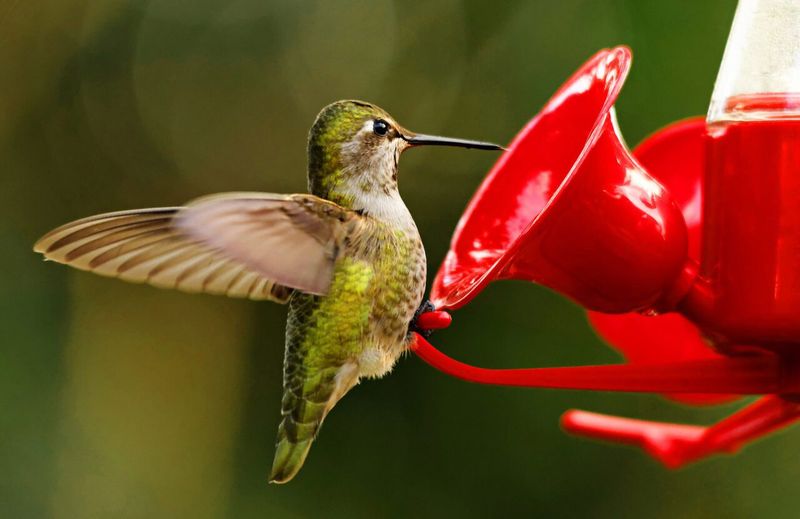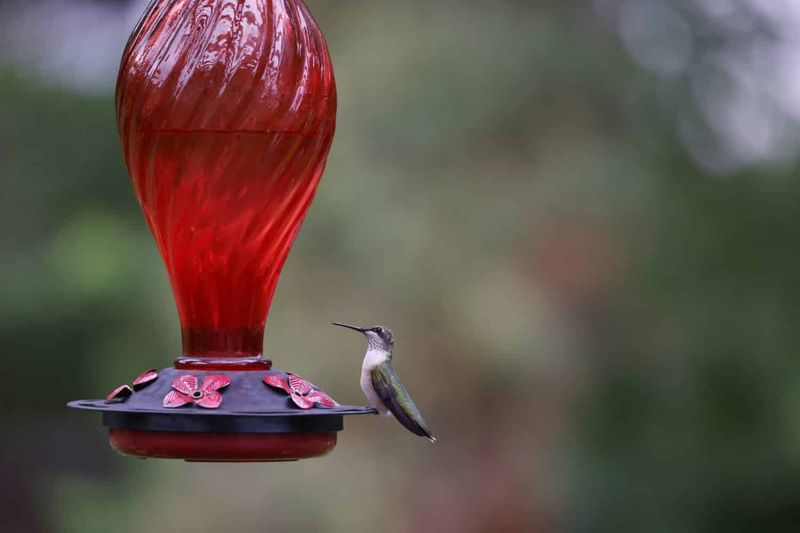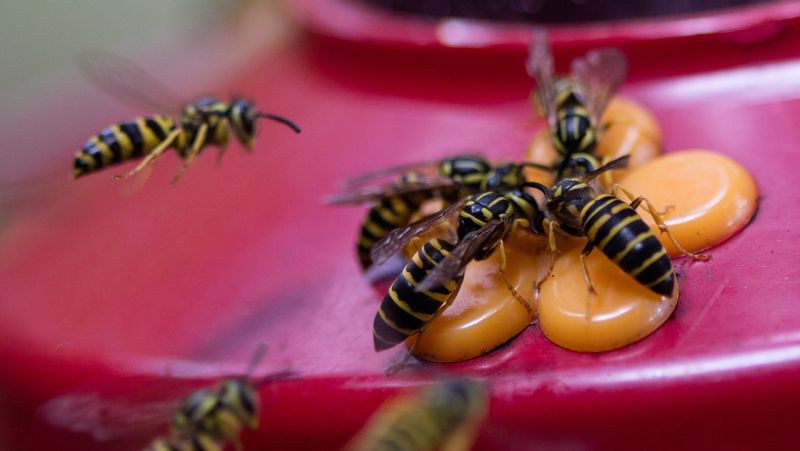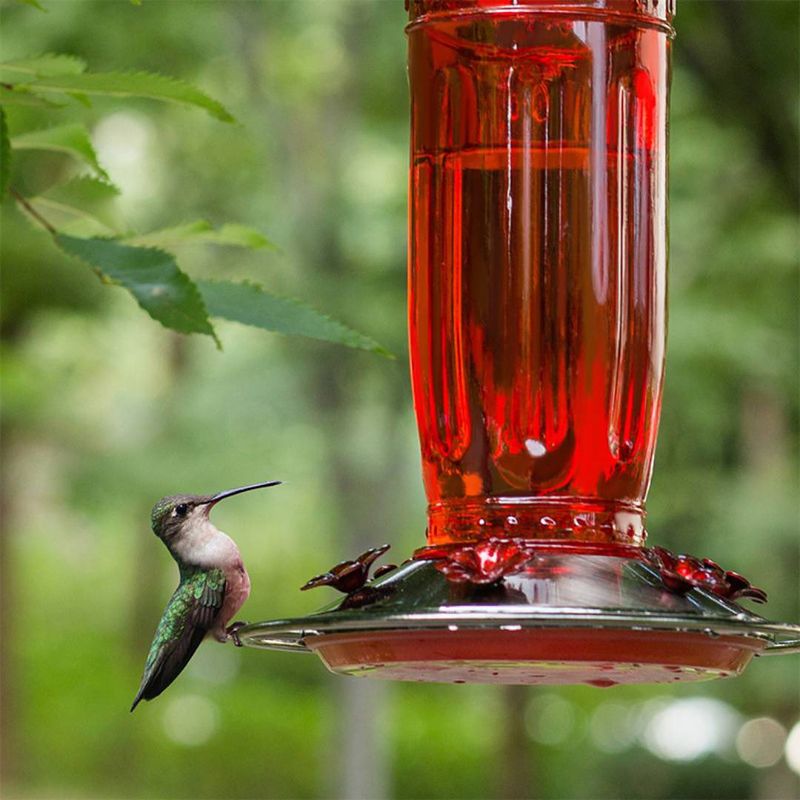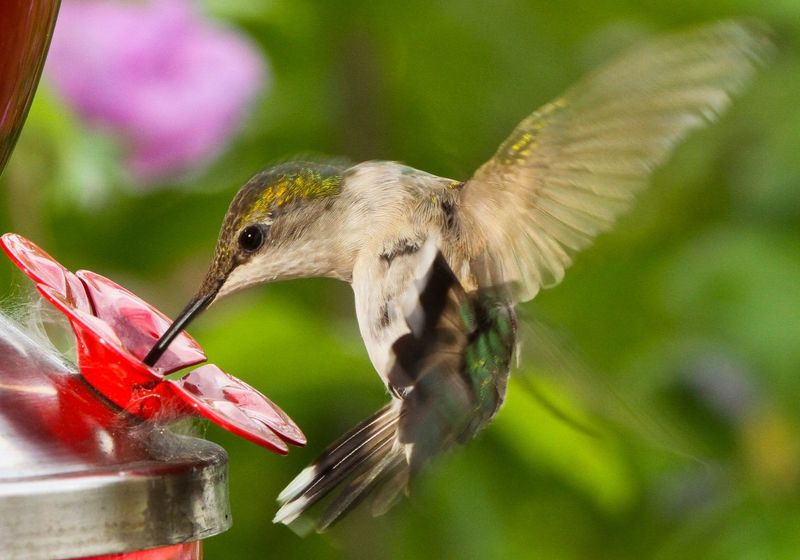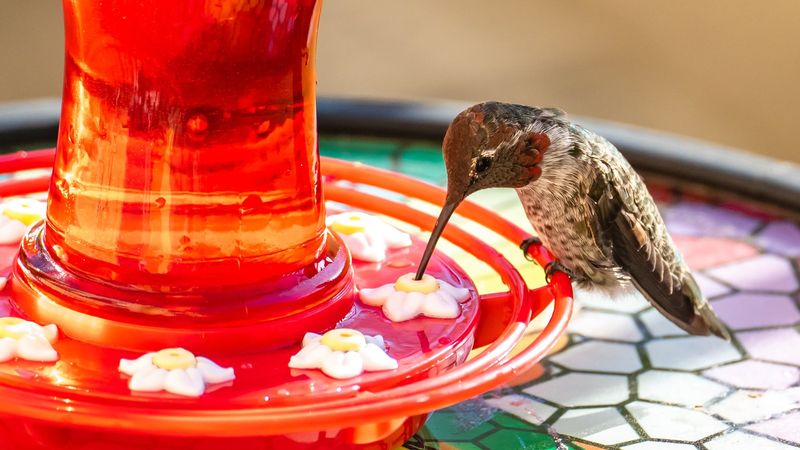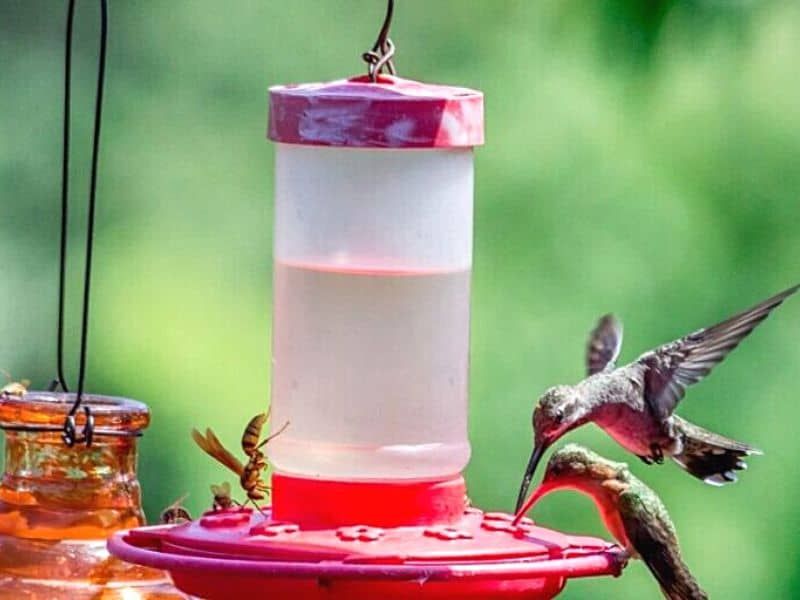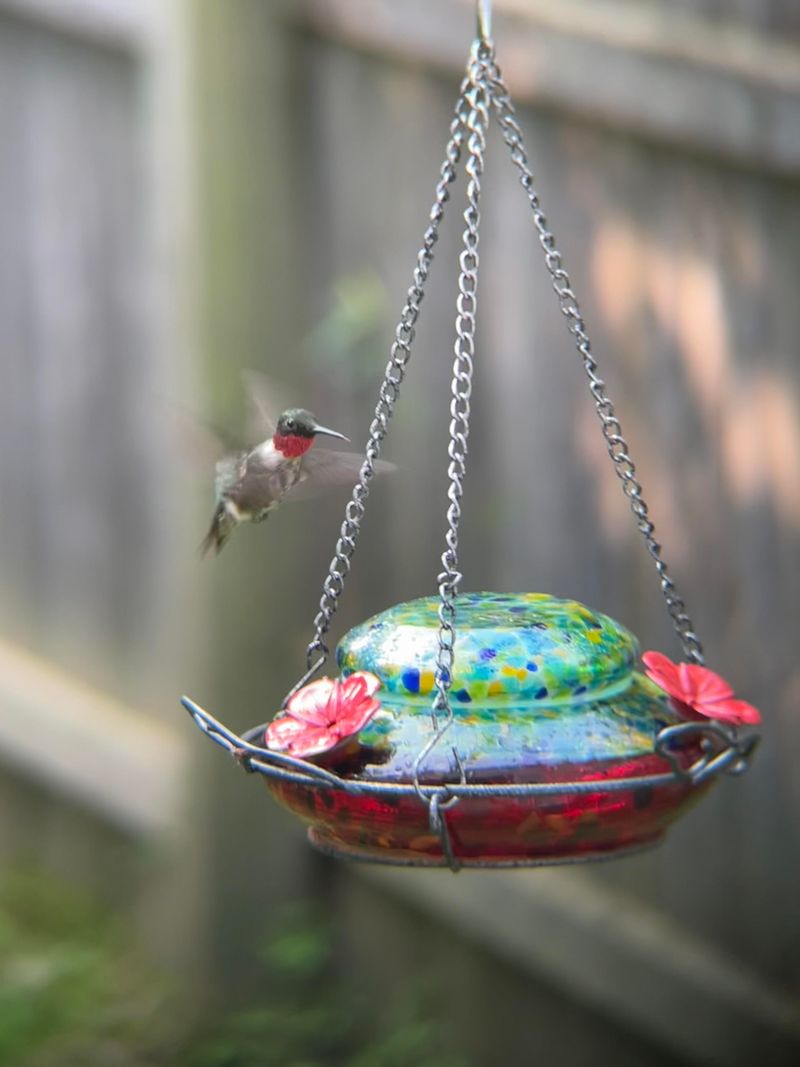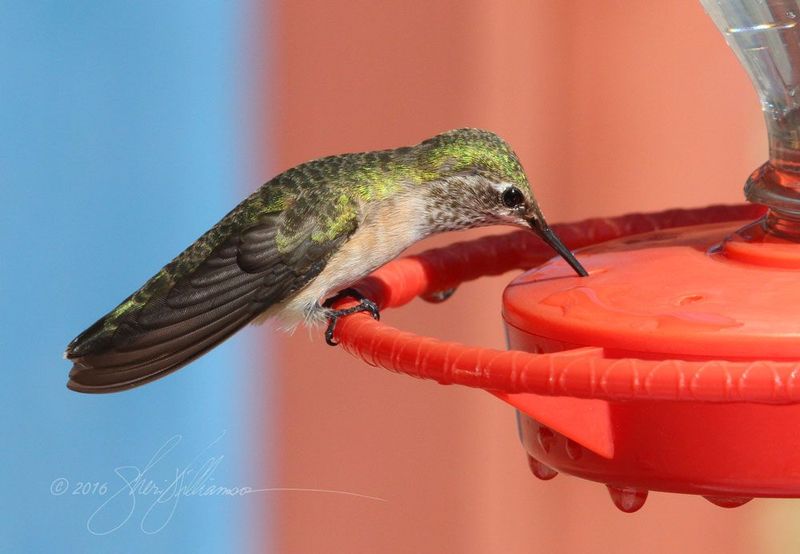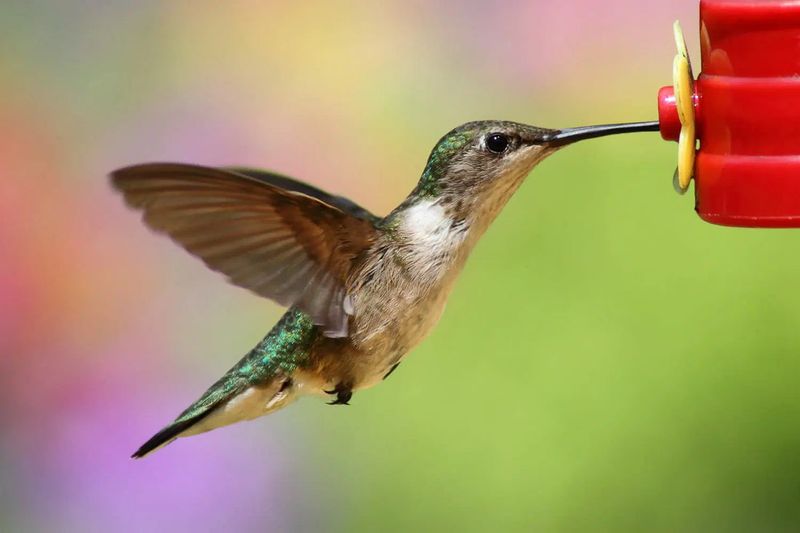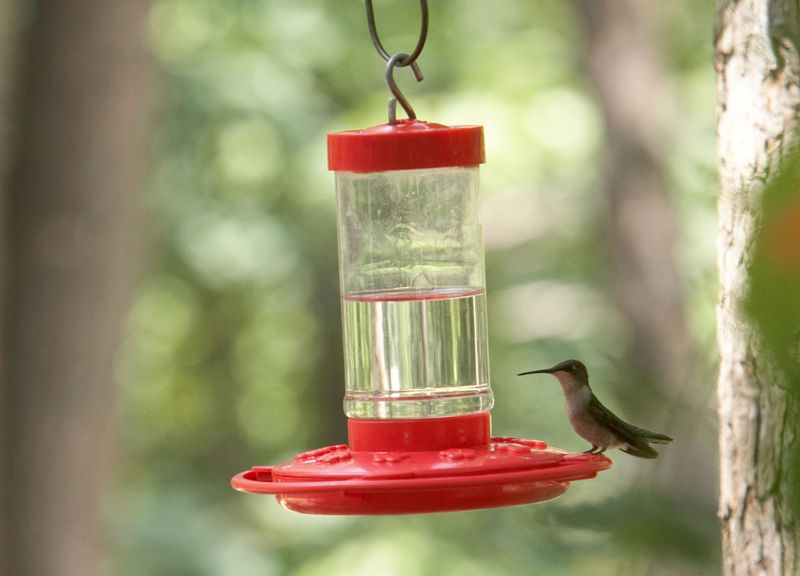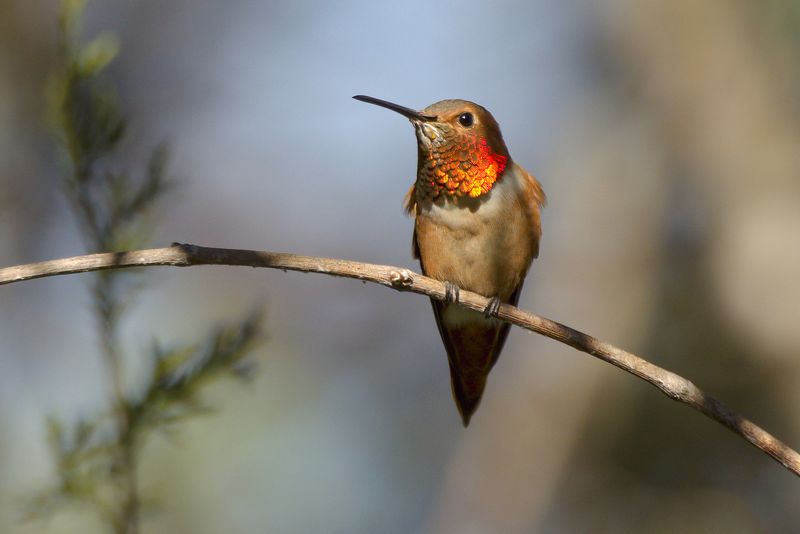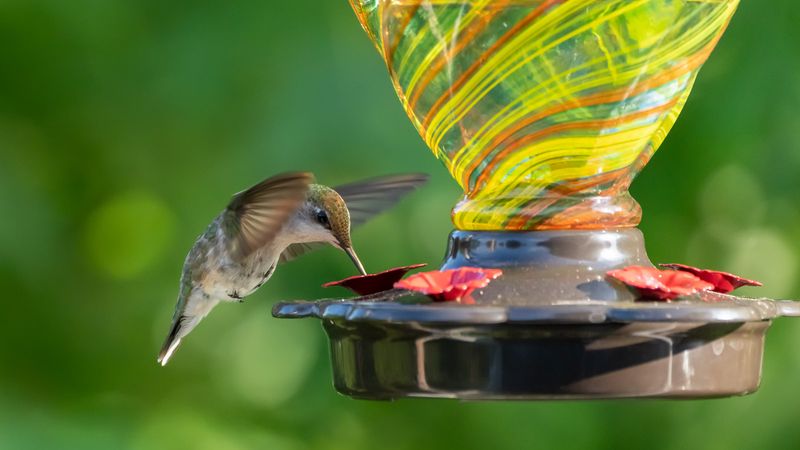If you’ve ever been lucky enough to watch a hummingbird darting around your garden, you know just how magical those tiny birds can be. I still remember the first time one hovered near my porch feeder—I was hooked from that moment on.
But here’s the thing I quickly learned: honey might seem like a natural treat, but it’s actually harmful to hummingbirds. When honey mixes with water, it can ferment or grow harmful mold and bacteria really fast. This can make hummingbirds seriously ill—or worse.
So, if you’re hoping to attract these winged wonders, stick to the classic recipe. It’s safe, effective, and keeps them coming back without any risks. Trust me, your local hummers will thank you!
1. Toxic For Hummingbirds
I’ve always loved watching hummingbirds flit around the garden, but I learned the hard way that honey is a big no-no. It turns out, honey can be toxic to these little guys, causing serious harm.
I remember trying honey once, thinking it was a treat, but the poor birds avoided the feeder completely. Switching back to a sugar solution made all the difference.
2. Promotes Harmful Mold
Did you know that honey can foster mold growth? It’s not the sweet treat we might think it is for our feathered friends. Honey’s high sugar content creates a perfect environment for mold.
This mold can be dangerous, not just for birds but also for other creatures visiting your garden. So, what alternatives are you considering for your feeders?
3. Encourages Fermentation
Have you ever wondered what happens when honey sits out in the heat? It ferments! Fermentation can turn feeders into a bubbling mess. Can you imagine a hummingbird sipping on something akin to alcohol?
It’s not a party we want them to attend. By avoiding honey, we keep their feeding stations safe and enjoyable.
4. Leads To Deadly Fungal Infections
A few years back, a neighbor’s hummingbirds fell ill, and it turned out the culprit was honey. Honey can harbor fungi that are lethal to these tiny birds. A fungal infection can quickly spread and be fatal.
Observing my neighbor’s experience was a wake-up call, and I’ve been cautious ever since, using only safe options. It was heartbreaking to watch, and I never want to risk that in my own yard.
5. Difficult To Clean
Cleaning honey out of a feeder is like trying to get gum out of hair. Trust me, it’s a sticky nightmare! Once, I spent a whole afternoon trying to scrub the residue away.
A sugar solution, on the other hand, rinses out easily. Save yourself the hassle and keep cleaning stress to a minimum. After that mess, I swore never to go the honey route again.
6. Spoils Quickly In Heat
On a hot summer day, honey in feeders can spoil faster than you can say “hummingbird!” The heat speeds up the spoilage process, making it unsafe for the birds.
Keeping feeders filled with a fresh sugar solution ensures a safe dining experience for our tiny guests. Now I change it often, especially during heat waves—better safe than sorry.
7. Not A Natural Nectar Substitute
Can honey really replace the nectar flowers provide? Not quite! Hummingbirds evolved to sip nectar, not honey. The latter lacks essential nutrients found in flowers. A sugar-water mix better mimics their natural diet.
So, is there a better way to keep things natural in your garden? Let’s stick to what nature intended. Ever since I made the switch, the birds have been happier and more active.
8. Can Cause Gut Imbalance
Honey can upset the delicate balance in a hummingbird’s gut. Their digestive systems are fine-tuned for natural nectar. Introducing honey is like us eating a spicy dish we’re not used to—it can cause discomfort.
Ensuring their diet is as close to natural as possible helps keep their tummies happy. I noticed fewer visits when I tried honey, and that was all the sign I needed.
9. Attracts Ants And Wasps
Nothing ruins a garden party for hummingbirds like uninvited guests. I once used honey, and the ants and wasps made a beeline for the feeder. It was a buzzing nightmare!
Switching to a sugar solution keeps these pests at bay, allowing hummingbirds to dine in peace. It’s a relief not having to deal with swarms every time I step outside.
10. Encourages Bacterial Growth
Bacteria love honey as much as Winnie the Pooh does! It’s a breeding ground for them, which can be harmful to birds. Would you want to drink from a glass full of bacteria?
Ensuring feeders are filled with clean, appropriate solutions keeps bacterial issues in check. I clean more confidently now, knowing it’s actually working.
11. Disrupts Feeding Behavior
Ever noticed how a change in diet can affect mood? For hummingbirds, honey can disrupt their usual feeding patterns. They might spend more time figuring out what’s wrong rather than feeding.
Shouldn’t we make their dining experience as seamless as possible? Avoiding honey ensures they remain on their natural rhythm. Since returning to the sugar mix, they’re back to their usual feeding routine.
12. Thick Consistency Is Dangerous
Honey’s thick texture is a challenge for tiny hummingbird tongues. They need something more fluid to sip easily. One attempt with honey left the poor birds struggling, reminding me of trying to drink a thick milkshake through a tiny straw.
A liquid sugar solution is more suitable for their feeding needs. Watching them struggle was enough to convince me to change things up.
13. May Clog Feeder Ports
Imagine pouring syrup through a straw. That’s what honey does to feeder ports. I once spent ages unclogging a feeder after using honey, feeling like a plumber on a bad day. Keeping feeders free-flowing with a thin sugar solution is a much better approach, making feeding easy for our feathered friends. I haven’t had to dig out clogs since I stopped using honey.
14. Increases Risk Of Disease Spread
Sharing is usually caring, but not when it comes to honey-filled feeders. They can become hotspots for spreading disease among birds. Picture a crowded restaurant with unsanitary conditions—it’s not a pleasant thought.
Keeping feeders clean and filled with safe solutions prevents this risk. It feels good knowing I’m not unknowingly creating a health hazard.
15. No Nutritional Benefit
Feeding hummingbirds honey is like serving them empty calories. It lacks the vital nutrients they get from nectar. Our goal should be to offer them the energy they need without filling them up with unnecessary sugars.
By using a proper sugar solution, we provide a more nutritious option that aligns with their dietary needs. The goal is to help them thrive, not just survive.
16. Plain White Sugar Solution
So, what should go in your feeders? Using plain white sugar ensures safety and simplicity. It’s easy to prepare and mimics the natural nectar they crave.
This simple solution keeps hummingbirds happy and healthy. Have you tried this mix yet? It’s a game-changer!
Once I made the switch, I noticed more hummingbird visits almost immediately. It’s a staple that’s easy to find and doesn’t pose the risks associated with honey.
17. Four-To-One Water Ratio
The magic formula is a four-to-one water to sugar ratio. This combination replicates the sweetness of natural nectar. Mixing it is a breeze, and it ensures that feeders provide the energy hummingbirds need without unnecessary risks.
Have you tried experimenting with the ratios? This one really hits the spot! I don’t even measure anymore—it’s become second nature.
18. Avoid Red Dye
I learned early on that adding red dye is a no-go. The bright color isn’t necessary and could harm the birds. I once used it thinking it would attract them more, but the natural beauty of flowers does the trick.
Keeping dye out and relying on natural cues is a better approach. Now I just use a red feeder, and they come flying in without hesitation.
19. Clean Feeders Every Few Days
Regular cleaning is crucial. I make it a habit to clean my feeders every few days to avoid any build-up. It’s like giving your kitchen a daily wipe down—it keeps things fresh and inviting.
This practice not only benefits the birds but also ensures your garden remains a thriving ecosystem. I just add it to my routine, like watering the plants—it takes minutes.
20. Boil Water To Kill Bacteria
Have you considered boiling water for your feeder solution? It’s an effective way to kill bacteria before mixing. Think of it like preparing a cup of tea—you want the water just right, free of any harmful microbes.
This simple step can make a world of difference in keeping the feeders safe. It gives me peace of mind, knowing I’ve done my part to protect them.

